How to recycle oil and white spirit medium for oil painting
Posted by Cass Art on 29th Jan 2021
It’s extremely important to be reminded never to put White Spirit or Turpentine down the drain; it’s poisonous and should never go into the water supply. How then to dispose of used mediums? The trick is to not dispose of, but to recycle.
I usually use a mix of Winsor & Newton Linseed Stand Oil and Artists’ White Spirit to dilute my oil paint and to create glazes. You can also use Distilled Turpentine, or Liquin. It’s not advisable to mix mediums as they may dry at different rates and that could potentially cause instability between layers; for example if you paint a layer diluted with Liquin over a layer of seemingly dry oil paint thinned with Distilled Turpentine you may find the top layer dries faster than the layer below it, causing cracking in the top layer.
Every artist has their go to medium and mine is Artists’ White Spirit and Linseed Stand Oil. As the name suggests this oil is created by boiling Linseed Oil and the result is very viscous and sticky; it looks like golden treacle and is even stickier. I was told this was a stable medium for thinning oil paint while a post graduate student at the RA and have stuck religiously to it ever since.
The proportion of Linseed Stand Oil to Artists’ White Spirit depends on what you want the consistency of the paint to be; generally I start with 20% stand oil to 80% white spirit, you need more oil if you want more of a glaze, or if you are working on top of dry layers of paint. A word of warning, if you have too much stand oil it will take ages to dry and neat oil will just remain forever sticky, attracting dust and fluff!
It’s tempting to use cheap white spirit from a hardware store but I use this for cleaning only. The reason is cheap white spirit may have added impurities that could corrupt your paint; you don’t really know what’s in it. Artists’ White Spirit is more expensive but if you follow my recycling method you won’t need as much.
The key to recycling painting medium is to use two pots, one of clean medium for dipping, that will be your painting medium, and one of dirty spirit for cleaning out brushes, only.
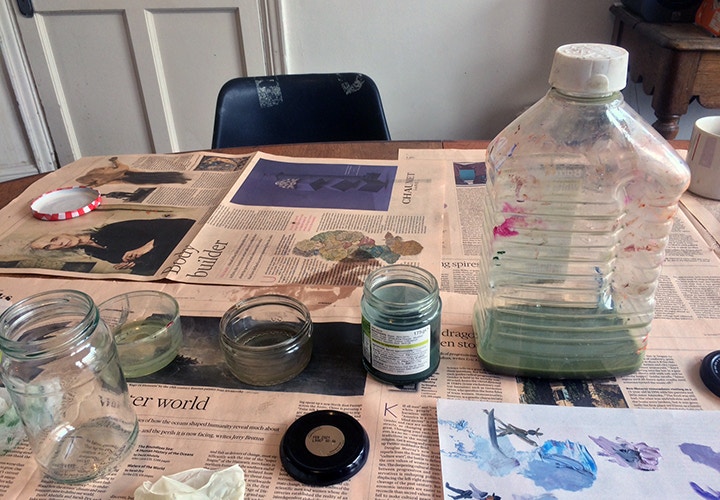
Glass jars and an old bottle of decorator’s white spirit.
I’m clearing up after my painting class and have taken a couple of snaps of my jars of medium to illustrate how to recycle oil and spirit. You can see a series of jars on the table and also an old empty bottle of decorator’s white spirit. I only use bottles that have previously contained white spirit, they are see through so I don’t get confused by what’s in them, and designed to hold white spirits with a child proof lid.
Each student has a clean jar and a dirty jar; I like those little pudding jars because they are shallow and won’t tip or spill. If you wipe your brush on a rag before you rinse it in dirty spirit, you will need less dirty spirit, another tip is to use one brush per colour so you clean your brushes less often.
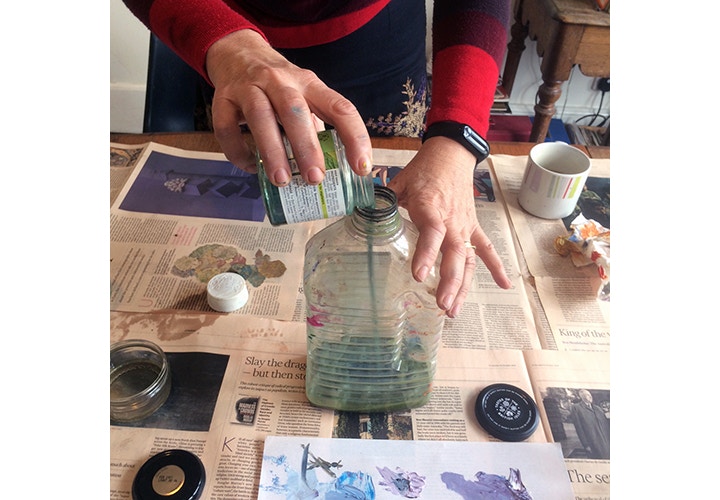
Decant the used dirty spirit into the plastic bottle.
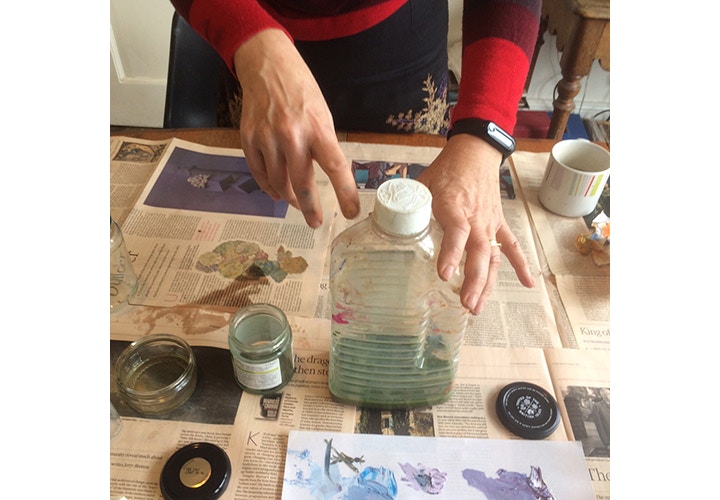
Screw on the lid to prevent fumes escaping
I’m pouring all my dirty spirit into the plastic bottle, and then I’m screwing on the lid. This prevents fumes escaping. This bottle is designed to hold spirit. What will happen is that the paint will sediment out of the solution so I am left with a stained, clear liquid which I can pour off and recycle as dirty spirit. This process may take a few days so I have a row of three bottles in my studio in various stages of sedimenting. Eventually I’m left with a remaining thick layer of sludge at the bottom of the bottle which goes in the bin.
As for the clean spirit, if my students have remembered to use it for dipping only then most of it can be decanted into a jar and used next time! Keep the jar somewhere safe; mine’s in the studio, but if I was working at home I would use another old white spirit bottle with a child proof lid.
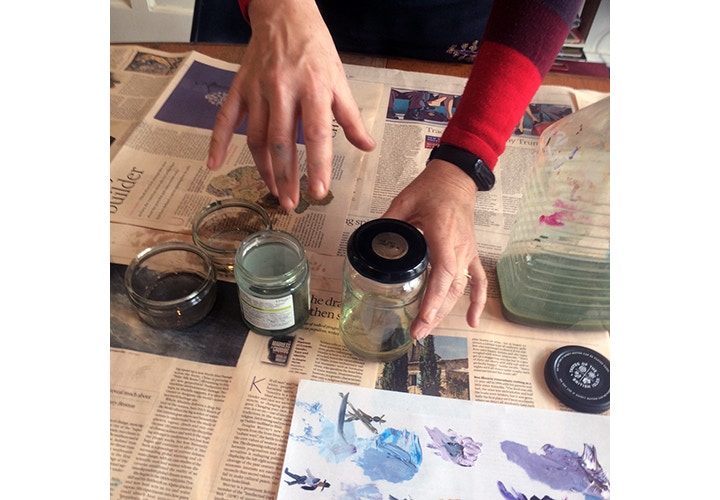
Any spills are onto the newspaper I’ve put on the table and can be thrown away at the end of the session. My last tip is if you get paint on yourself, your cat, or your clothes don’t use white spirit it’s too harsh and can cause irritation. Remember oil paint is also soluble in any oil; I use vegetable oil to clean my hands at the end of a session, or if the cat has walked across a wet painting. You could also use butter.
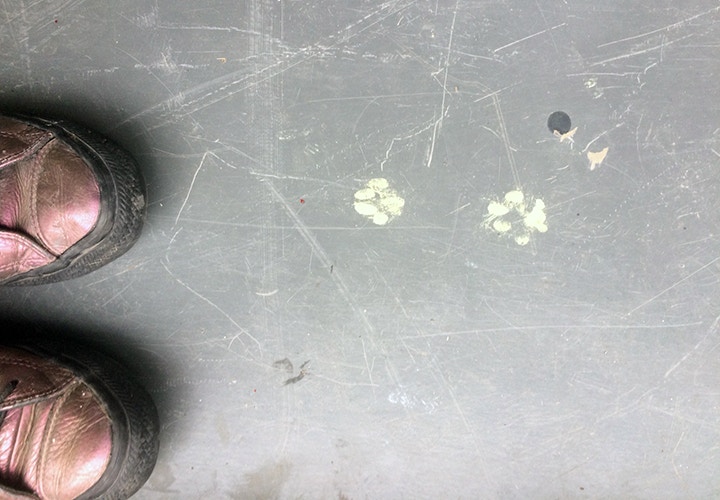
Feeling Inspired?
Shop online for everything you'll need. Don't forget to hashtag #cassart on social media to show us your creations.


